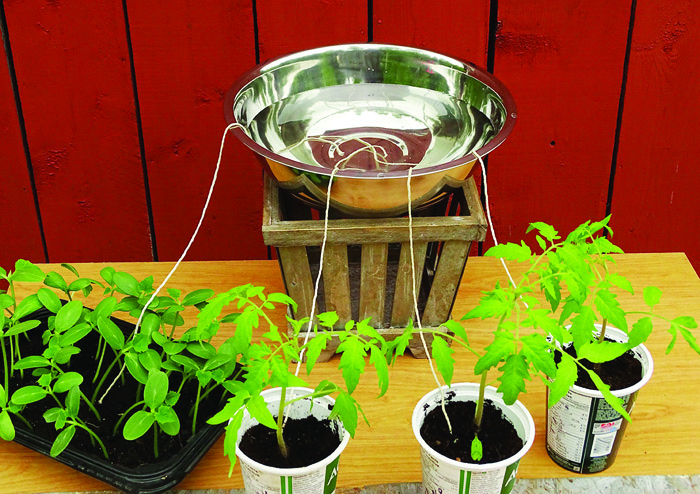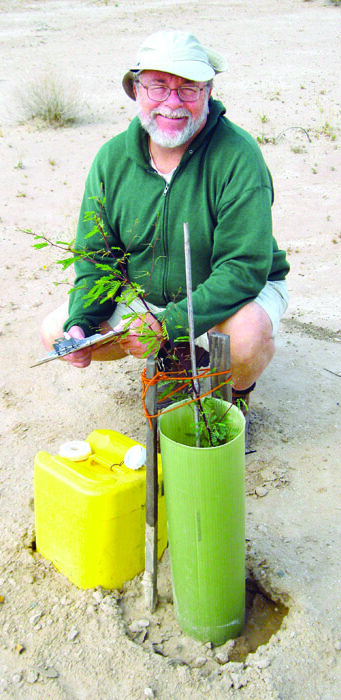West Bend, WI – Wick watering is a lesser-known method of efficient irrigation. I was first introduced to the concept while reading a paper from India many years ago, in which wicks were used in conjunction with buried clay-pot irrigation. I later discovered a variety of systems for wick watering that had been used in lab studies to measure water use, vacation-water plants, provide a steady water supply for plants in greenhouses, and starting seeds.

Set up a wick system to water your potted and in-ground plants with hands-free efficiency.
I couldn’t find any research on the use of wick irrigation in the field or garden, so I gave it a try. Over the past 30 years, I’ve conducted many experiments and field trials that have helped me understand how to design and use self-watering wick systems.
Click HERE to SUBSCRIBE to FREE local news at
Washington County Insider on YouTube
Use wick watering to keep your plants hydrated. Self watering wick systems are simple to assemble, and they use less water than other methods.

Wick irrigation uses a wettable fabric or rope to carry water from a reservoir or pipe to the roots of a plant. Wick watering can work by a capillary flow that goes up and over a rise, resulting in a slow flow; by gravity flow, where water runs down the wick, which produces a fast flow; or by a hybrid of both systems. Here’s a closer look at both techniques so you can determine which will work best for your plants.
Click HERE to learn more at Mother Earth News.








